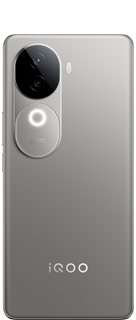Understanding the ISP in Mobile Phones: The Unsung Hero of Smartphone 📷📷
In the world of smartphones, features like megapixels, multi-camera setups, and AI-enhanced imaging often steal the spotlight. However, the true powerhouse behind these capabilities lies within the processor: the Image Signal Processor (ISP).
This specialized component is responsible for transforming raw data captured by camera sensors into stunning photos and videos. Here's a deep dive into the role of the ISP and why it is critical in modern smartphones.

What is an ISP?
An Image Signal Processor (ISP) is a dedicated hardware unit integrated into a smartphone’s System-on-Chip (SoC). It handles all the tasks related to image and video processing, including:
Converting Sensor Data: Transforming the raw data from the camera sensor into a usable image.
Noise Reduction: Cleaning up images by reducing digital noise, especially in low-light conditions.
Color Correction: Adjusting colors to ensure accurate and vibrant tones.
Dynamic Range Optimization: Balancing highlights and shadows to create well-exposed images.
In essence, the ISP ensures that the raw information captured by the sensor is processed into high-quality visuals.

Key Functions of an ISP
1. Image Capture and Processing
The ISP processes the data captured by the camera’s sensor, applying algorithms to improve clarity, sharpness, and color accuracy.
It also manages exposure, white balance, and focus adjustments to optimize every shot.
2. High Dynamic Range (HDR)
ISPs merge multiple images taken at different exposures to create HDR photos. This process enhances the overall dynamic range, ensuring details in both shadows and highlights.
3. Noise Reduction
By analyzing patterns in the sensor’s data, the ISP reduces graininess, particularly in low-light environments, for cleaner images.
4. Support for High-Resolution Cameras
Modern ISPs are designed to handle the massive data throughput required by high-resolution cameras, often exceeding 200MP.
5. Video Processing
ISPs enable features like 8K video recording, slow-motion capture, and real-time stabilization using advanced algorithms.
6. AI-Enhanced Imaging
With the integration of AI capabilities, ISPs can identify scenes, recognize faces, and apply real-time enhancements for better photo and video quality.

How ISPs Have Evolved Over Time
1. From Basic Processing to Computational Photography
Early ISPs handled only basic image processing tasks. Today, they work in tandem with AI and machine learning to enable computational photography features like night mode, portrait mode, and real-time filters.
2. Support for Multi-Camera Systems
With the rise of multi-camera setups, ISPs have become adept at combining data from multiple lenses (wide, ultra-wide, telephoto) to deliver seamless transitions and enhanced image quality.
3. Higher Video Standards
Modern ISPs support advanced video capabilities, such as 8K resolution, HDR video recording, and enhanced stabilization.
4. Power Efficiency
As smartphones have become more powerful, ISPs have been optimized to process complex tasks while consuming less power, ensuring longer battery life during photography sessions.

Popular ISPs in the Market
1. Qualcomm Spectra ISP
Found in Snapdragon processors, it supports advanced features like 8K HDR video, multi-frame noise reduction, and AI-based scene detection.
2. Apple Neural Engine ISP
Integrated into Apple’s A-series chips, it powers features like Deep Fusion, Smart HDR, and cinematic video modes.
3. Samsung Exynos ISP
Supports high-resolution sensors, multi-camera systems, and AI-powered enhancements in Samsung smartphones.
4. MediaTek APU ISP
Known for its AI-focused capabilities, it offers efficient image processing in budget-friendly devices.

Why ISPs Matter to Consumers
The ISP is a deciding factor in the overall photography and videography experience of a smartphone. While a high megapixel count might attract attention, the quality of images and videos ultimately depends on how well the ISP processes the raw data.
Key Benefits for Users:
Enhanced low-light photography.
Smoother and more vibrant videos.
Real-time adjustments for professional-grade shots.
AI-driven features like object recognition and background blur.
The Future of ISPs
As smartphones continue to evolve, so will ISPs. We can expect future ISPs to:
Process even higher resolutions and frame rates.
Enable more sophisticated computational photography features.
Improve AR and VR imaging capabilities.
Enhance real-time video effects like motion tracking and background replacement.
Conclusion
The ISP is a critical component in delivering the advanced imaging features that define modern smartphones.
From improving photo quality to enabling cutting-edge video capabilitie
s, it is the backbone of smartphone photography. While often overlooked, the ISP deserves recognition as one of the most impactful innovations in mobile technology.
Please sign in
Login and share

























